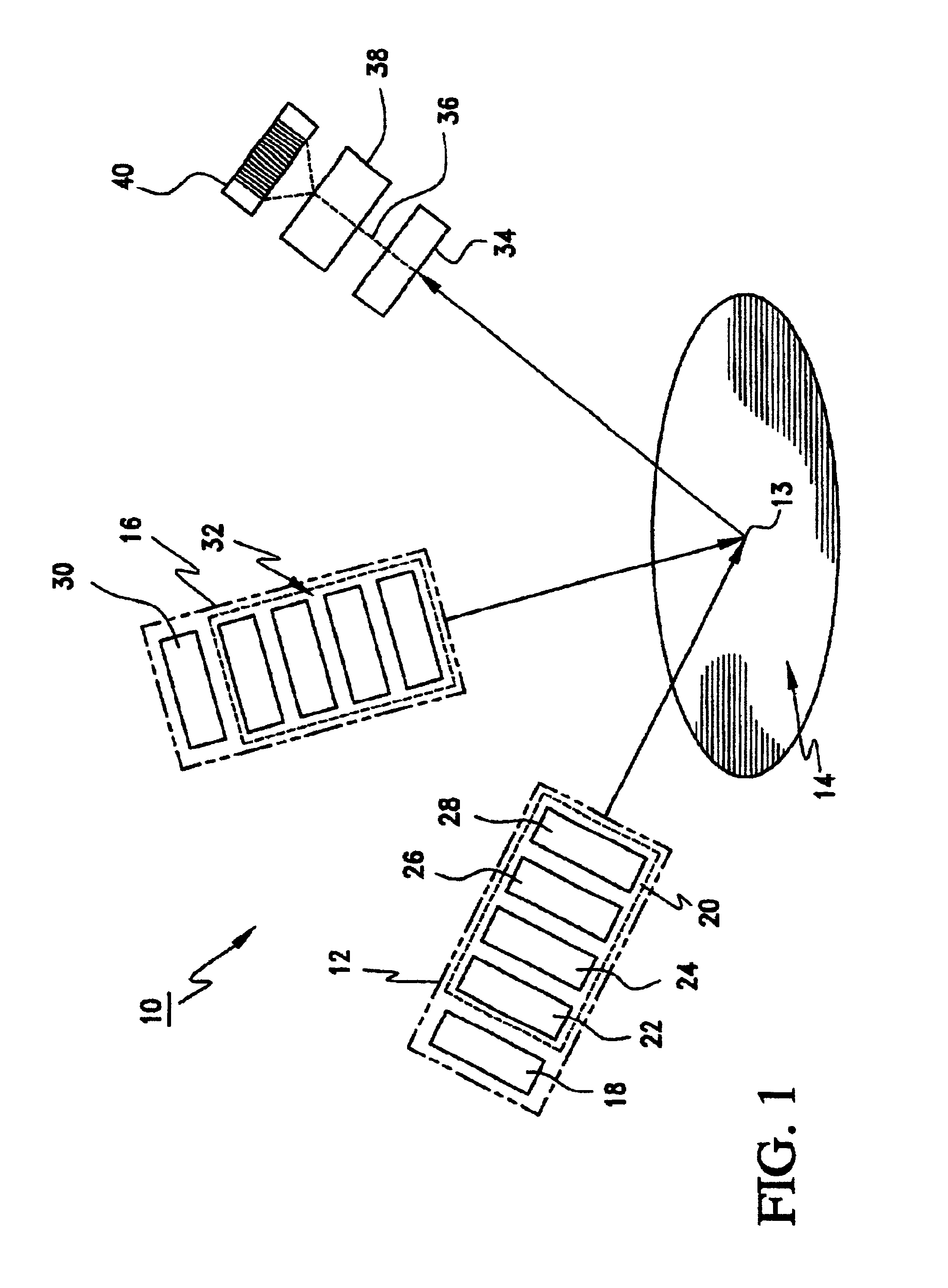Broadband infrared spectral surface spectroscopy
a spectral surface and infrared technology, applied in the field of surface spectroscopy, can solve the problems of small subsequent work on limited application, and inability to achieve the development of second harmonic generation, and achieve the effects of small change in optical signal, easy classification and association, and slow creation of spectrum
- Summary
- Abstract
- Description
- Claims
- Application Information
AI Technical Summary
Benefits of technology
Problems solved by technology
Method used
Image
Examples
Embodiment Construction
[0019]Referring now to the drawings and the characters of reference marked thereon, FIG. 1 illustrates a preferred embodiment of the nonlinear optical system of the present invention, designated generally as 10. Diagnostic system 10 includes a first optical source, indicated by phantom lines 12 for providing a narrow frequency bandwidth visible pulse that is directable to a location 13 on a surface 14 of the semiconductor wafer to be interrogated. A second optical source 16 provides a broadband infrared pulse that is also directable to the location 13 on the surface 14 to be interrogated. The optical sources 12, 16 are aligned so that their surface areas of optical illumination overlap on the interrogated surface 14. This alignment may be implemented via a series of refractive and reflective elements. For example, by changing their tilt in two axes, two mirrors in series can propagate a laser beam to any position on a surface.
[0020]The first optical source 12 includes a narrow frequ...
PUM
| Property | Measurement | Unit |
|---|---|---|
| pulse length | aaaaa | aaaaa |
| fundamental output wavelength | aaaaa | aaaaa |
| frequency bandwidth | aaaaa | aaaaa |
Abstract
Description
Claims
Application Information
 Login to View More
Login to View More - R&D
- Intellectual Property
- Life Sciences
- Materials
- Tech Scout
- Unparalleled Data Quality
- Higher Quality Content
- 60% Fewer Hallucinations
Browse by: Latest US Patents, China's latest patents, Technical Efficacy Thesaurus, Application Domain, Technology Topic, Popular Technical Reports.
© 2025 PatSnap. All rights reserved.Legal|Privacy policy|Modern Slavery Act Transparency Statement|Sitemap|About US| Contact US: help@patsnap.com


